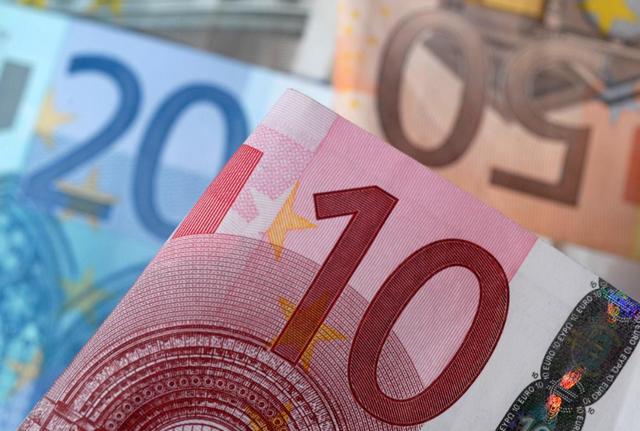
In the global economic landscape, the eurozone has always played a pivotal role. However, the recent release of a series of economic data, especially the significantly lower than expected Composite Purchasing Managers' Index (PMI), has cast a heavy shadow over the economic outlook of the eurozone. These data show a significant decline in private sector business activity, which not only exacerbates market concerns about economic growth in the eurozone, but also forces the European Central Bank to adopt more aggressive monetary policies to address this dilemma.
In September, data released by S&P Global showed a sharp decline in the Eurozone Composite PMI from 51.2 last month to 48.9, marking the first time since March that it fell below the 50% boom bust line. This figure is much lower than economists' expectations (50.6), indicating that the eurozone economy has entered a contraction zone. In terms of sub items, both the manufacturing and service industries have suffered heavy losses. The manufacturing PMI fell to a new low of 44.8% from 45.8% last month, indicating a sharp slowdown in production activity. The PMI for the service sector also fell from 52.9% to 50.5%, approaching the boom bust line, indicating that the service sector, which dominates the eurozone economy, is stagnating.
The contraction of private sector business activities in the eurozone is not an isolated phenomenon, but closely linked to the overall economic environment. The PMI data of major economies within the eurozone, such as Germany and France, are also not optimistic. Especially in Germany, as the economic engine of the eurozone, its economic growth expectations have been repeatedly lowered, and key economic data has not been updated in a timely manner due to technical issues and data processing delays, further exacerbating market pessimism. Although France's economic performance rebounded in August, this momentum did not last until September, and the initial value of the composite PMI has fallen far below the critical value of 50%, indicating a rapid loss of its economic vitality.
Faced with the bleak outlook for the eurozone economy, the European Central Bank has to adopt more aggressive monetary policy measures. On September 12th, the European Central Bank announced a 25 basis point reduction in its key deposit rate to 3.5%, while also lowering its main refinancing rate and marginal lending rate by 60 basis points to 3.65% and 3.90%, respectively. This is the first time in nearly five years that the European Central Bank has cut interest rates, aiming to stimulate consumption and investment by reducing borrowing costs, thereby injecting vitality into the sluggish economy.
However, the market is skeptical about the effectiveness of the European Central Bank's interest rate cuts. On the one hand, interest rate cuts do help reduce borrowing costs for businesses and individuals, thereby promoting investment and consumption. On the other hand, interest rate cuts may also lead to currency depreciation, exacerbate the rise in import costs, and have adverse effects on export enterprises. In addition, the problems faced by the eurozone economy are not caused by a single factor, but rather the result of a combination of multiple factors, including geopolitical conflicts, high energy prices, inflationary pressures, and a global economic slowdown. Therefore, relying solely on interest rate cuts may not be able to reverse the decline of the eurozone economy in a short period of time.
When the news of the European Central Bank's interest rate cut came out, the market reacted quickly and complexly. European stock markets rose in response, as investors' expectations for loose monetary policy increased. However, the euro exchange rate suffered a sharp decline, plummeting 0.7% against the US dollar and falling below key support levels. In the bond market, the simultaneous decline in government bond and corporate bond yields indicates the market's expectation of future interest rate declines.
Looking ahead, the challenges facing the eurozone economy remain severe. The European Central Bank stated that future monetary policy will depend on economic data and will hold successive meetings to determine appropriate levels and durations of restrictions. This means that the European Central Bank will closely monitor changes in inflation and economic growth, and adjust monetary policy accordingly. If the eurozone economy continues to decline and inflationary pressures are eased, the European Central Bank may continue to cut interest rates; But if inflationary pressures rise again, interest rate cuts or even hikes may be suspended.
For the governments of the eurozone countries, in addition to relying on monetary policy, they also need to increase their efforts in fiscal policy and structural reform. By increasing public investment, improving production efficiency, and enhancing the business environment, measures can be taken to stimulate economic vitality, promote employment growth, and enhance economic resilience. Meanwhile, strengthening international cooperation and coordination is also one of the important ways to address global economic challenges.
In short, the bleak economic outlook for the eurozone has become an undeniable fact. Faced with the contraction of private sector business activities and the slowdown of economic growth, the European Central Bank has taken measures to cut interest rates to address the challenges. However, the market is skeptical of its effectiveness, and the problems facing the eurozone economy are complex and ever-changing. Therefore, the future direction of the Eurozone economy remains uncertain. All parties need to remain vigilant and patient, and work together to address challenges and seek solutions.

A new survey released in the United States shows that in the context of rising prices and growing concerns among the public about the economic outlook of the country, there is a coexistence of frugality and differentiation.
A new survey released in the United States shows that in th…
By the end of 2025, the situation in the Middle East resemb…
According to Channel NewsAsia, international oil prices hav…
On Sunday, US President Donald Trump Trump met with Ukraini…
Officials in the Trump administration, speaking on Fox News…
In 2025, the Trump administration reshaped the global trade…